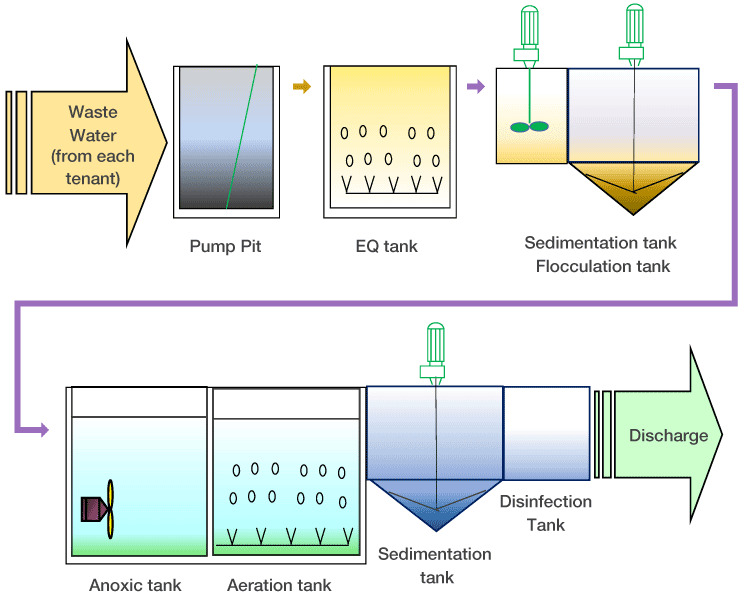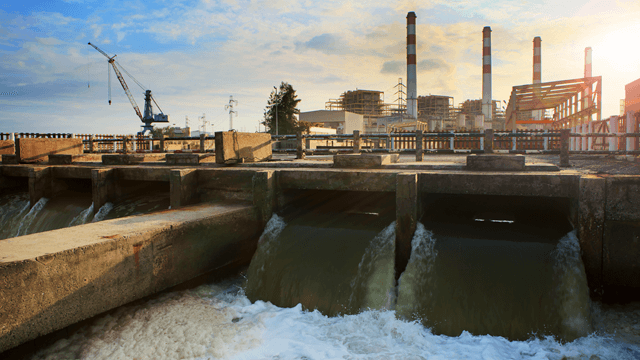Innovations and Breakthroughs in Industrial Waste Water Treatment Technologies
The landscape of industrial wastewater treatment is undergoing a transformative change, driven by innovations that enhance both effectiveness and sustainability. As regulative standards evolve, the combination of AI and maker knowing right into wastewater administration systems assures to ensure and improve operations compliance.
Overview of Drainage Therapy Technologies
Wastewater treatment innovations encompass a variety of methods made to remove contaminants from industrial effluents before their release right into the environment. These modern technologies are important for maintaining environmental balance and making certain compliance with ecological guidelines. The primary classifications of wastewater treatment consist of physical, chemical, and biological approaches, each offering unique purposes based upon the nature of the impurities existing.

Organic therapy methods utilize microbes to weaken raw material, making them specifically effective for organic-rich effluents. Strategies like triggered sludge and biofilm reactors harness the natural deterioration capacities of bacteria, causing substantial reductions in biochemical oxygen need (BODY)
Advanced Filtering Techniques
Advanced purification techniques represent an important evolution in the world of industrial wastewater treatment, improving the efficiency of contaminant elimination procedures. Industrial Waste Water Treatment. These methods incorporate a variety of modern technologies, including microfiltration, ultrafiltration, nanofiltration, and turn around osmosis, which give sequential barriers for various fragment dimensions and chemical structures
Microfiltration and ultrafiltration utilize membrane systems to get rid of put on hold solids, bacteria, and bigger organic molecules, enhancing the top quality of effluent before further treatment. Nanofiltration bridges the space in between ultrafiltration and reverse osmosis, successfully eliminating divalent ions and organic compounds, therefore lowering the load on downstream processes.
Reverse osmosis supplies the highest degree of purification by enabling just water and tiny molecules to travel through its semi-permeable membrane layers, making it excellent for reclaiming premium water from industrial effluents. Current innovations in membrane layer technology, consisting of the advancement of more sturdy and fouling-resistant materials, have actually significantly enhanced functional effectiveness and reduced costs.
Integrating these advanced filtration techniques not just enhances the overall therapy procedure however likewise adds to sustainability efforts by making it possible for water reuse and resource recuperation in industrial settings. (Industrial Waste Water Treatment)
Organic Treatment Innovations

Furthermore, the advancement of engineered organic systems, such as membrane bioreactors (MBRs), combines organic therapy with advanced membrane purification. This assimilation enables greater effluent high quality and reduced footprint, making it ideal for space-constrained industrial facilities. Technologies in genetically engineered Source microbes have actually likewise emerged, boosting the biodegradation of specific pollutants, such as pharmaceuticals and heavy metals, that are typically testing to eliminate.
Additionally, the execution of bioaugmentation techniques, where advantageous microorganisms are presented to enhance the existing organic treatment processes, has revealed appealing results in enhancing treatment efficiency. These developments collectively symbolize a pattern in the direction of more effective and lasting organic treatment approaches that can adapt to the evolving complexities of commercial wastewater streams. As markets continue to focus on ecological conformity, these biological advancements will play a critical duty in wastewater monitoring.

Resource Recuperation Methods
In industrial settings, the combination of source healing approaches has actually ended up being significantly crucial for boosting sustainability and lessening waste. These techniques focus on extracting useful materials and energy from wastewater streams, thereby transforming possible toxins right into multiple-use resources.
One popular technique is nutrition recuperation, where nitrogen and phosphorus, typically present over in wastewater, are caught and converted into fertilizers. This not only minimizes environmental effects but additionally offers a circular economic situation solution for agricultural applications. Additionally, technologies such as anaerobic food digestion permit for the conversion of organic waste into biogas, a renewable power source that can counter nonrenewable fuel source use in commercial operations.
Additionally, progressed purification and membrane layer technologies facilitate the healing of commercial spin-offs such as steels and salts. These recouped materials can be reintegrated right into production processes, lowering the demand for virgin resources.
Future Fads in Drainage Administration
As industries increasingly focus on sustainability, the future of wastewater management is established to undergo considerable improvements. Technological advancements, such as fabricated intelligence and artificial intelligence, will certainly make it possible for extra efficient surveillance and administration of wastewater systems. These innovations can forecast maintenance demands, optimize treatment procedures, and boost decision-making, inevitably decreasing operational costs and ecological effect.
Additionally, the combination of round economic climate concepts will certainly play a crucial function in wastewater administration. Industries are anticipated to change towards systems that not just deal with wastewater but additionally recuperate valuable sources, such as nutrients, water, and energy. This change will decrease waste and advertise the reuse of products, aligning with international sustainability goals.
Arising treatment techniques, webpage such as membrane layer bioreactors and progressed oxidation procedures, will certainly additionally boost the effectiveness of wastewater therapy, permitting greater high quality effluents appropriate for reuse. Furthermore, governing structures are likely to develop, emphasizing stricter standards for wastewater discharge and encouraging sectors to adopt cutting-edge therapy services.
Conclusion
In verdict, the development of commercial wastewater treatment technologies demonstrates a considerable change in the direction of enhanced effectiveness and sustainability (Industrial Waste Water Treatment). Developments in innovative purification methods, article organic treatments, and source recovery approaches highlight the industry's commitment to ecological stewardship.
The landscape of industrial wastewater therapy is going through a transformative change, driven by developments that improve both effectiveness and sustainability.Wastewater treatment innovations include a range of methods created to get rid of contaminants from industrial effluents before their launch right into the environment.Utilizing the power of organic procedures has actually led to significant innovations in the treatment of commercial wastewater.Additionally, the application of bioaugmentation methods, where useful microorganisms are presented to improve the existing organic treatment procedures, has actually revealed promising outcomes in boosting treatment efficiency. These advancements jointly symbolize a fad in the direction of even more reliable and lasting biological therapy methods that can adapt to the progressing intricacies of industrial wastewater streams.